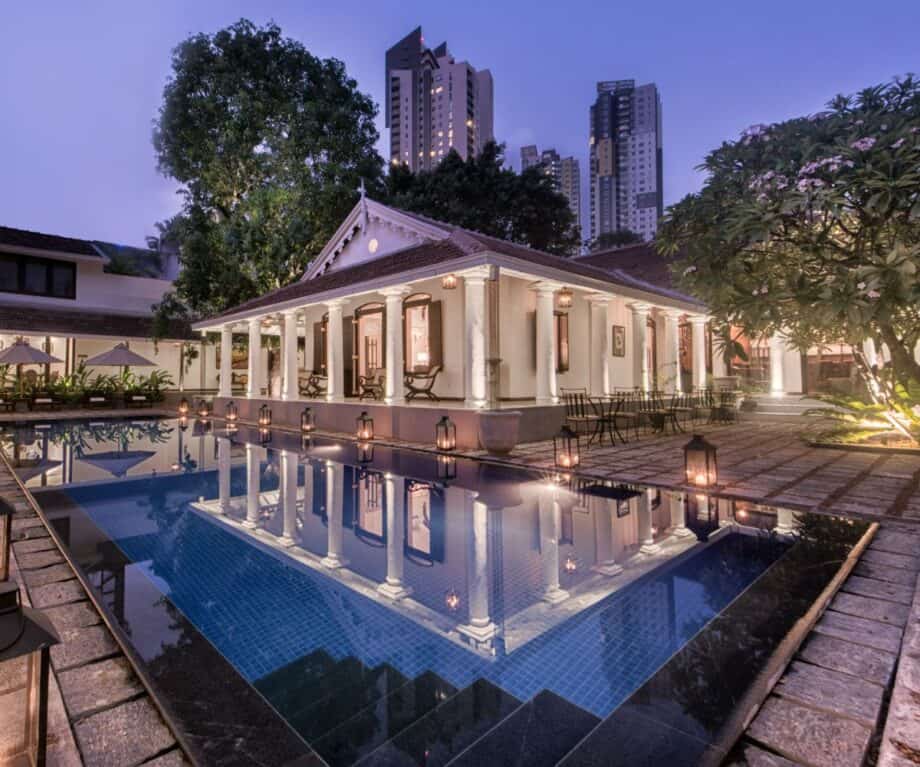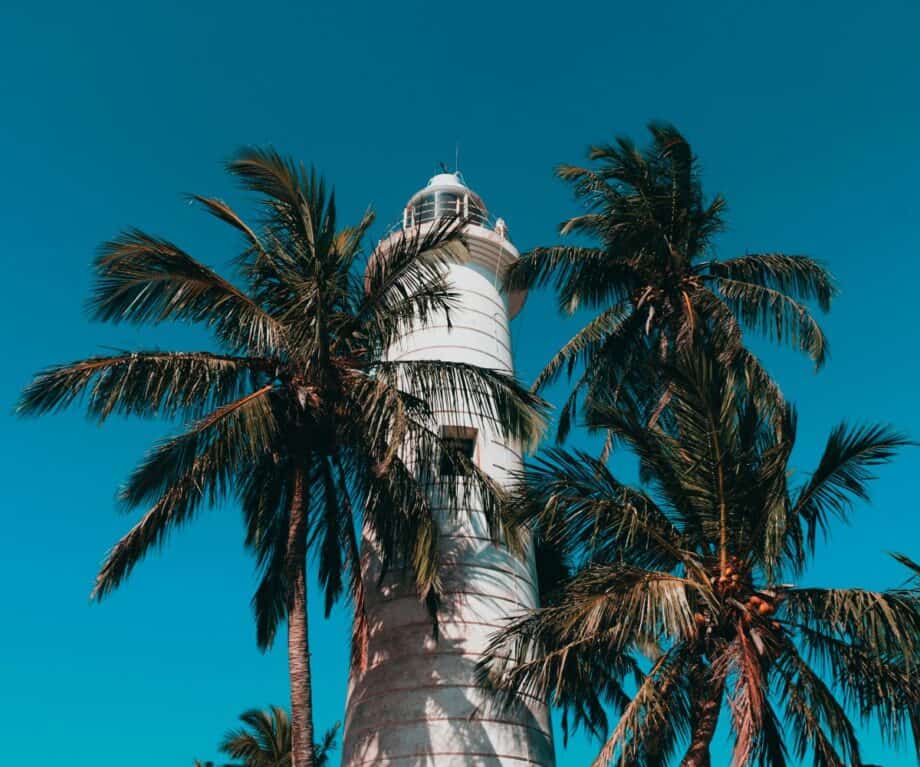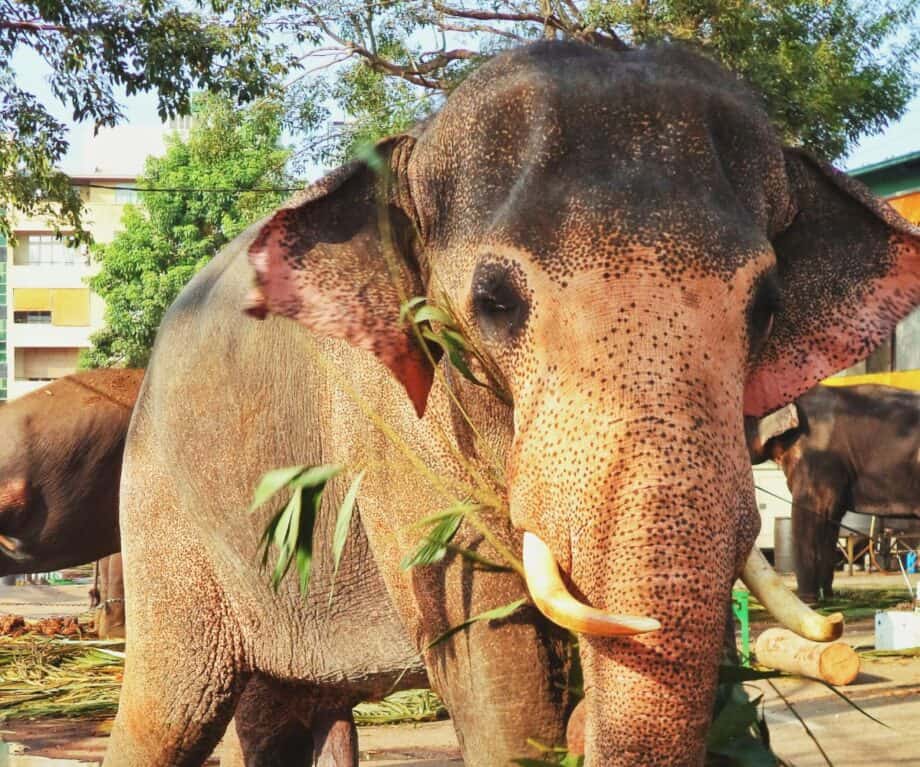Sri Lanka: a world on one island

Diplomat.Today
Sri Lanka is one of those places everyone is talking about right now. It is an emerging destination and one of those special places with something for everyone.

Want to combine rich history, diverse culture, nature, wellness, wildlife, incredible cuisine and more in one trip? Then Sri Lanka is the place to be. With 8 UNESCO sites, ancient cities, lush rainforests, palm-lined beaches, national parks, fantastic tea plantations and generous, warm, hospitable people; this compact, teardrop-shaped island does not disappoint. Whatever you are looking for, Sri Lanka has something for you.


Colombo
Colombo, the commercial capital and most populous city in the country, is a port city with a rich colonial heritage.
The city is a heady mix of architectural and cultural influences, with historic temples, bustling bazaars, colonial remains and extensive parks. Take a tuk tuk ride to visit the labyrinthine Pettah Market. You can also do as the locals do and head to Galle Face Green for sunset, or have high tea at one of the colonial-style hotels overlooking the Indian Ocean.


Some of the most beautiful and important temples in Sri Lanka are hidden among the busy, chaotic streets of Colombo. The striking Sri Kaliawasanathar Swami Devasthanam Temple is one of the oldest and most ornate Hindu temples in the city. You will be amazed by the tiered towers decorated with colorful miniature statues of Hindus. Located in the bustling downtown area, near the picturesque Beira Lake, the striking Gangaramaya Temple is one of the oldest Buddhist temples in Colombo. Perched atop a rocky promontory surrounded by the sea, Koneswaram Temple is an engineering treat with intricate carvings, sculptures and colorful shrines.


Where to stay: Uga Residence was once a grand Victorian mansion built in the 19th century. Its grand halls and extensive gardens once entertained British governors, Indian maharajas, European nobility and the crème de la crème of colonial Ceylon society. Today it is a centrally located boutique hotel with 11 luxury suites.


Anuradhapura
A four-hour drive from Colombo is Anuradhapura, the original royal capital of Sri Lanka and a UNESCO World Heritage Site. Ancient cities don’t get much bigger than Anuradhapura, and few capitals in the world have ever lasted so long. Dating back to the fourth century BC, Anuradhapura was the island’s spiritual and secular capital for over a millennium. At its peak, the city was dotted with monasteries and was home to more than 10,000 monks. Covering an area of over sixteen square kilometers, many of these monasteries and colossal dagobas (stupas) can still be seen today and continue to attract thousands of Buddhist pilgrims.


Giant stupas include Jetavanarama, built in the 3rd century AD and still the largest brick monument in the world, Thuparamaya Stupa, the first dagoba built in the country, and Ruwanwelisaya, one of the tallest monuments in the world.
We opted for a private guided bike tour that took us to a dozen sites, including the three colossal stupas and the Sri Maha Bodhi, a sacred fig said to be a branch of the tree under which Buddha was enlightened.


Where to stay: Uga Ulagalla is a 150-year-old mansion, set in 28 hectares of lush gardens and rice fields. Just a 30-minute drive from Anuradhapura and an hour’s drive from the great rock fortress of Sigiriya, it is a good location for exploring the area’s archaeological treasures.


Sigiriya (Lion Rock Fortress)
The most iconic of Sri Lanka’s seven UNESCO World Heritage Sites, Sigiriya was built during the reign of King Kassapa I (477 – 495 AD) and is sure to impress. Surrounded by a lush expanse of jungle, the crag rises almost vertically 200 meters. At its summit are the remains of a royal palace and citadel, and at its foot are the remains of an extensive network of ancient pleasure gardens. Known for its ancient paintings (frescoes), Sigiriya was both a royal palace and a Buddhist monastery in its time.


Pro tip: Go early, so avoid the heat of the day and the crowds and make sure you’re prepared for the 1,200-step climb.


Dambulla Cave Temples
This UNESCO site is one of the most beautiful and well-preserved cave temples in all of Asia. Dating back to the third and second centuries BC, the spectacular cave temples of Dambulla, still home to Sri Lankan Buddhist monks, are carved into a granite rock and tower 150 meters above the surrounding plains.


Spread over five caves, under a huge rock overhang and with intricately painted ceilings, there are a total of 153 Buddha statues, three statues of Sri Lankan kings and four statues of gods and goddesses.


Kandy was the last capital of the ancient kings of Sri Lanka. It’s a beautiful place, hidden next to a lake in the central highlands of the country. This is Sri Lanka’s second largest city and home to Sri Dalada Maligawa, the Temple of the Tooth Relic, a teeming temple complex that houses the relic of Buddha’s tooth. Since ancient times, the relic has played an important role in local politics, as it is believed that whoever possesses the relic controls the government of the country – wars have been fought over this relic! Monks worship daily in the inner chamber of the temple and rituals are performed three times a day: at sunrise, noon and evening. The Temple of the Tooth Relic is an integral part of life in Sri Lanka and you can join the devotion with your own petal offerings and light votive candles if you wish.


After visiting the temple, browse Kandy’s bustling market places, with bright, fresh produce, local delicacies and fragrant spices, or spend the day exploring opulent temples and learning about the city’s history.


Where to stay: Located in the tranquil hills on the outskirts of Kandy, King’s Pavilion is a renovated bungalow with traditional rustic charm and elegant touches of luxury.


The train
Chances are you’ve seen photos of travelers leaning out of a bright blue train and looking out at Sri Lanka’s vibrant green tea plantations. That’s the famous train journey from Kandy to Ella and a must-do on any Sri Lankan itinerary.


The Hill Country Railway is instantly recognizable and perhaps the most beautiful in Sri Lanka. We took a 3 hour train journey from Kandy to Hatton, through beautiful tea country. The route has been described as one of the most beautiful train journeys in the world, and with good reason!


The tea plantations
Since the first tea bush was planted here in 1867, Sri Lanka has become the fourth largest tea producer in the world – 17% of the world’s tea crop is grown here. Sri Lanka’s tea country is a beautiful expanse of rolling green hills and lush plantations. If you love tea and want to learn more about the history of tea, or are simply looking for some peace and quiet, visiting a tea plantation is a wonderful escape.


The bungalows on the Dilmah tea company estate date back to colonial times and offer stunning views and exemplary, personalized service. Take long, relaxing walks through the tea plantations, take a tour of a tea factory to learn all about the age-old process of tea making, enjoy a high tea overlooking Castlereagh Lake or perhaps a game of croquet.


Where to stay: Ceylon Tea Trails has restored and renovated five historic tea planter bungalows on the estates of the famous Dilmah Tea. The guests here wish for nothing and the service is impeccable.


Gal
At the southernmost tip of the country and surrounded by the ocean on three sides, the walled and cobbled city of Galle is a must on any visit to Sri Lanka. The imposing Galle Fort, built by the Dutch in 1663, is the largest and best preserved sea fort in all of South Asia. A UNESCO World Heritage Site, the fort is home to Dutch colonial buildings, old mosques and churches, museums and many quirky boutique cafes and restaurants.


Spice traders and merchants have been replaced by a cosmopolitan crowd of artists, writers and designers, and Galle’s small streets are packed with boutiques, bustling bars and cafes.


Where to stay: Fort Bazaar is Galle Fort’s hippest getaway. The 18 rooms are all arranged around a central courtyard and the restored 18th-century merchant’s house is a cool retreat from the busy streets of historic Galle.


Balapitiya
There are many great things to do and see in Sri Lanka, but some days you may just want to relax. Not far from Galle, Balapitiya on the west coast of Sri Lanka is a wonderful place to stop, relax and unwind.


With its palm tree-lined idyllic sandy beach there are plenty of activities to fill your days with, but if you prefer you can simply laze by the pool, chat on the beach or swim in the sea.


Where to stay: Kumu Beach is a modern, sleek boutique hotel just steps from golden sandy beaches.


If you haven’t discovered the ‘Pearl of the Indian Ocean’ yet, it’s time to put it at the top of your bucket list. So before it gets too busy, now is the time to plan your visit.


Seeing Sri Lanka in sustainable style
It’s wonderful to travel, to visit remote places around the world and absorb the history and culture of a place. But our desire to check destinations off our travel bucket lists has led to more than one of these places being destroyed by tourism. The negative impact of tourism is found in far too many popular destinations today; thanks in no small part to all that carefully curated travel content on social media.
London-based Jacada Travel creates custom-designed itineraries for travelers to more than 70 countries on six continents. Creating unique travel experiences and unique journeys, for those who appreciate luxury and are looking for a personal touch.
There is a lot of ‘greenwashing’ in the travel industry these days. While it’s all very well when a hotel says it’s green, ecological or sustainable, it’s another thing entirely when they can prove it. Jacada recently launched a Positive Impact Collection to take the guesswork out of it. The collection is a curated selection of properties, from Africa to Latin America and from Europe to the Asia Pacific – properties that have been carefully vetted and proven their sustainability credentials.
The properties eligible to participate in the collection are all focused on promoting positive change in the travel industry, by reducing their environmental footprint, conserving natural resources, promoting community involvement, preserving local culture and implement a range of innovative climate-conscious practices.
Jacada Travel’s Positive Impact Collection is a great resource for travelers, allowing them to choose luxury properties that contribute to the well-being of a destination – a great example of how tourism, when done right, can be a force for positive change.
Jacada planned the perfect Sri Lanka itinerary for my family and they can do the same for you.
Did you like this article?
Receive similar content straight to your inbox.
Please enable JavaScript in your browser to submit the form




